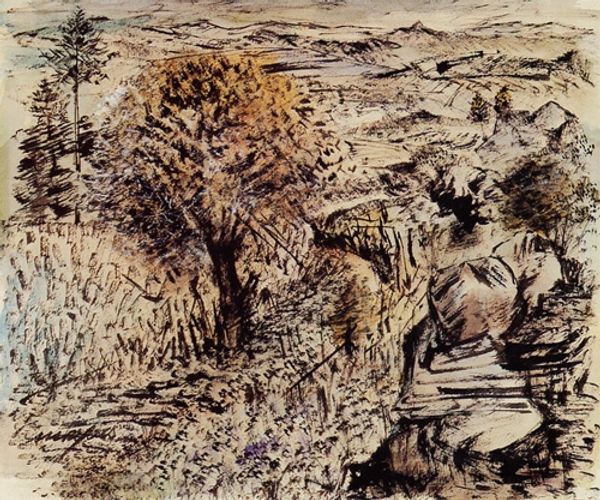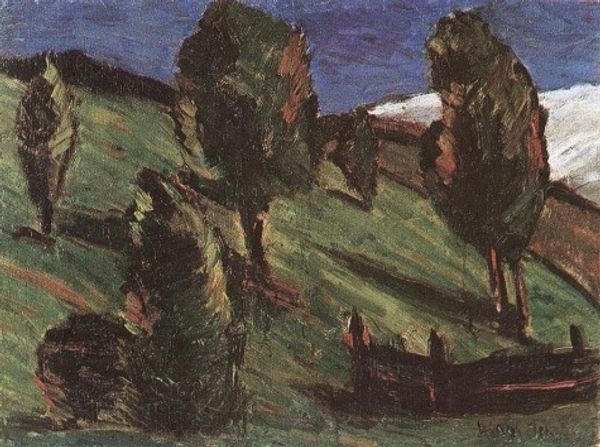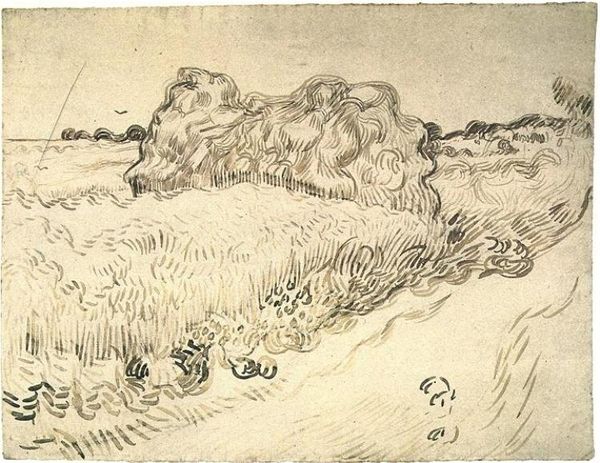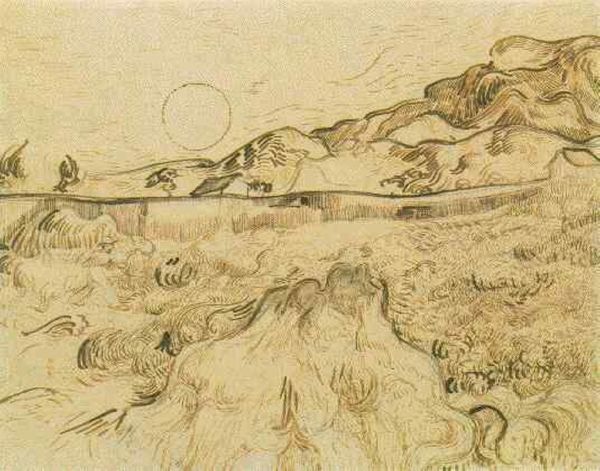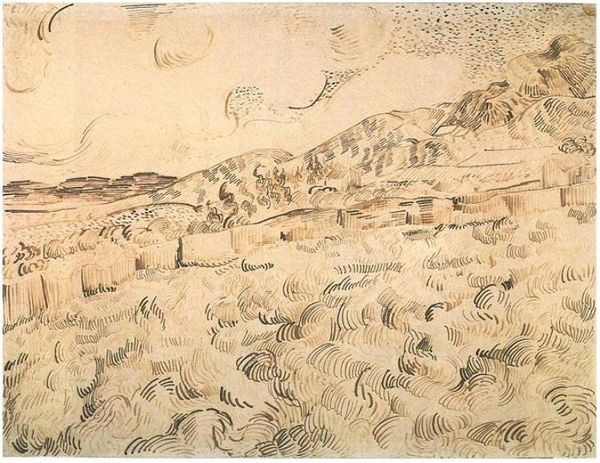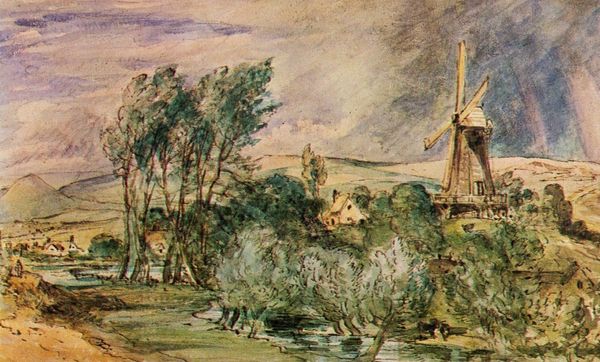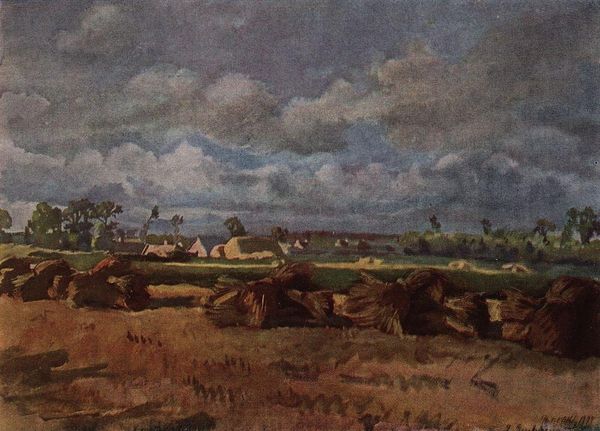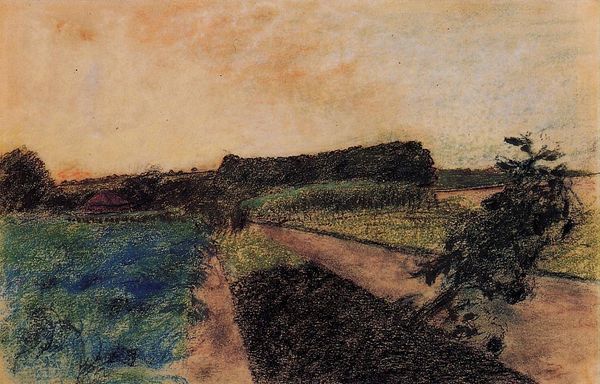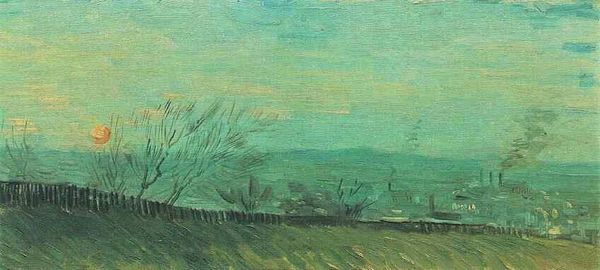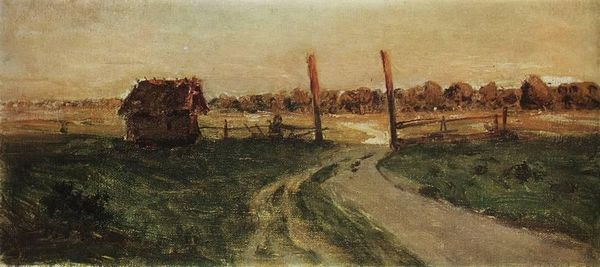
Copyright: Public domain US
Editor: This is "Dutch landscape with windmills" by Pablo Picasso, painted in 1905, in oil and watercolor. It's so interesting to see Picasso do a traditional landscape, quite different from what he later became famous for! What do you make of this piece? Curator: It’s fascinating to consider this landscape within the broader narrative of Picasso’s career and the art world's trajectory at the dawn of the 20th century. Landscapes like this were often viewed as nostalgic or nationalistic. How do you think Picasso positions himself in relation to those traditions here? Editor: I see the windmills as quite old fashioned, sort of like a historical statement but they're made with loose brushstrokes, almost impressionistic, making the traditional setting new again. Curator: Precisely. Consider the art market then: Dutch landscapes, especially those harking back to the Golden Age, held significant commercial appeal. This piece, while seemingly traditional, displays a very modern sensibility in its technique, like you said. Do you think Picasso is playing with these established categories? Editor: I hadn’t thought of that! He's really blurring the lines, maybe challenging what's considered "marketable" art. What about the limited colour palette? It seems deliberate. Curator: The muted palette could reflect a deliberate distancing from the vibrant colours of pure Impressionism, signaling a move toward something new while still engaging with the aesthetic values valued at the time. Maybe Picasso sought a more solemn and subdued atmosphere in the Netherlands. It makes you think about the impact the landscape itself had. Editor: So much to think about how artistic identity, tradition, and commerce might all play a role, especially at the beginning of an artist's career. I see a lot more in this seemingly simple landscape now! Curator: Exactly. Seeing this through the lens of art history shows how Picasso, even early on, engaged with and subverted established artistic norms, creating something all his own in the public discourse.
Comments
No comments
Be the first to comment and join the conversation on the ultimate creative platform.

